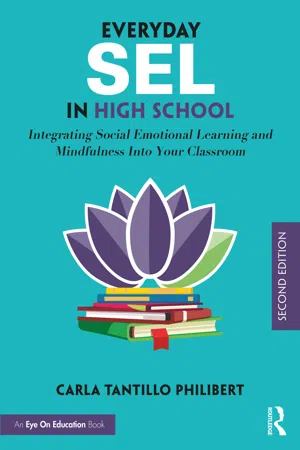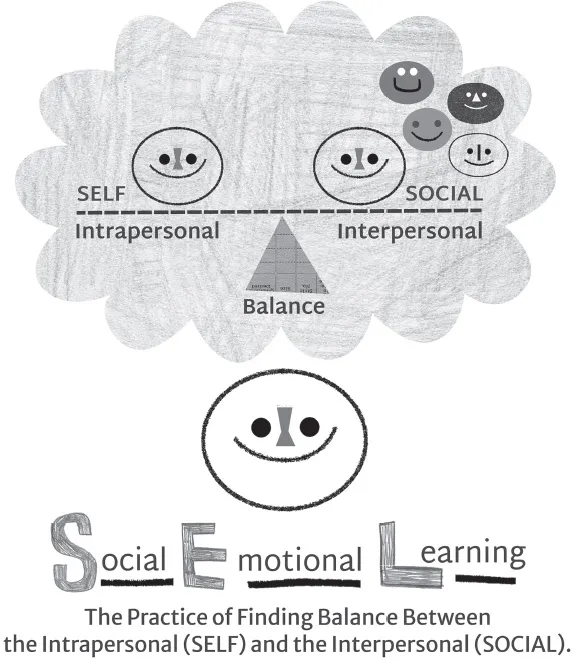
Everyday SEL in High School
Integrating Social Emotional Learning and Mindfulness Into Your Classroom
- 146 pages
- English
- ePUB (mobile friendly)
- Available on iOS & Android
Everyday SEL in High School
Integrating Social Emotional Learning and Mindfulness Into Your Classroom
About this book
With this bestselling book from educational consultant Carla Tantillo Philibert, you'll gain practical strategies for teaching Social Emotional Learning (SEL), mindfulness, and well-being to help improve the human connection between you and your students. You'll find out how to lead students through mindfulness activities, simple yoga poses, and breath-work techniques. Topics include mindful practices, well-being strategies to combat stress and anxiety, giving your students the space to understand their emotions and strengthen peer-to-peer communication, developing the foremost and essential SEL competencies, and engaging in experiential activities to strengthen SEL skills. The new edition reflects the latest CASEL guidelines and includes updated activities, as well as a brand-new directory of terms, and an intentional focus on educators' and students' socio-emotional well-being. Perfect for high school educators at any level of experience, the book will help you develop positive youth identity and promote connectedness so students can deal successfully with life's stressors beyond school doors.
Frequently asked questions
- Essential is ideal for learners and professionals who enjoy exploring a wide range of subjects. Access the Essential Library with 800,000+ trusted titles and best-sellers across business, personal growth, and the humanities. Includes unlimited reading time and Standard Read Aloud voice.
- Complete: Perfect for advanced learners and researchers needing full, unrestricted access. Unlock 1.4M+ books across hundreds of subjects, including academic and specialized titles. The Complete Plan also includes advanced features like Premium Read Aloud and Research Assistant.
Please note we cannot support devices running on iOS 13 and Android 7 or earlier. Learn more about using the app.
Information
1
An Approach, Not a Program
- frame the “why” behind the work for all adults, school stakeholders, students, and parents
- create space for student voice and agency, regularly!—check in daily with students, in their own words (not teachers observing what they think a student may be thinking or feeling); ask them about their mood and energy; seek actionable insights, like if they need their seat moved or are too close to the door to concentrate
- support the well-being, self-care, and mental health needs of the adults and the students, shame-free, by promoting positive youth (and adult) identity
- provide clear answers to implementation questions for adults and students: Am I being graded on this? Am I being evaluated on this? How do I practice this at home? Who is expected to implement? What time(s) am I expected to implement each day/week and for how many minutes total?
- build the SEC of all adult stakeholders in the school/district with hands-on, experiential training that honors their unique starting points with this work
So, What Is Social Emotional Learning?

- Vocalization: speaking, chanting, singing
- Movement: gross/fine/locomotor, yoga, dance, fitness
- Stillness: reflection, breath work, meditation
- Human Connection: play, collaboration, communication
Table of contents
- Cover
- Half Title
- Series
- Title
- Copyright
- Dedication
- Contents
- Foreword
- Acknowledgments
- Meet the Author
- Directory of Terms
- Introduction
- 1 An Approach, Not a Program
- 2 Three Steps for Getting Started
- 3 SEL-Informed Classroom
- 4 Framing SEL
- 5 Implementation and Integration
- 6 SELF (Intrapersonal) Practices
- 7 SOCIAL (Interpersonal) Practices
- 8 Crafting SEL Stories
- 9 Recruiting Your Administrator
- Appendix
- Bibliography